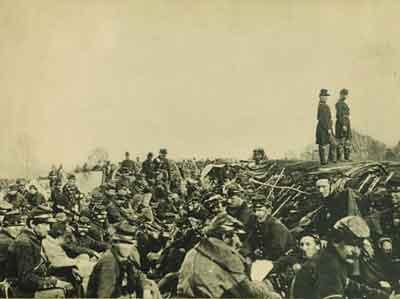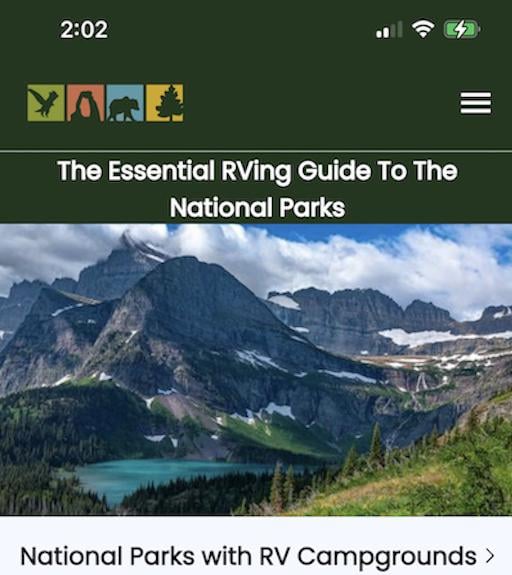The 150th Anniversary of the Civil War is nearly here and a recent event at Petersburg National Battlefield underscored a bit of history that often escapes much notice—the role of American Indians in the conflict.
Estimates of the number of American Indians who fought for either the Union or the Confederacy vary widely; several sources cite numbers ranging from about 6,000 to over 20,000 men. One example occurred at Petersburg, Virginia, and that story has recently received some renewed attention.
Earlier this month, descendents of Company K of the First Michigan Sharpshooters returned to the park to meet with Superintendent Lewis Rogers and his staff and pay homage to their ancestors. Company K consisted entirely of American Indians from Michigan who enlisted in the Union Army.
According to information from the park, "The 1st Michigan Sharpshooters fought valiantly in every major battle in the Petersburg campaign. The American Indians were a memorable presence at the Battle of the Crater, where they were noticed for their composure under adversity. A Union officer described watching a group of them pull their jackets over their faces and sing their death chant when trapped in the crater under Confederate fire. When Petersburg fell in April, 1865, after a nine and half month siege, the First Michigan raised the first United States flag above the city."
It's not hard to see how specific details about individual units get lost in the history of the Civil War, and even just at Petersburg. A park publication notes that 800 regiments of nearly 160,000 soldiers served on both sides at Petersburg. That's a lot of history waiting to be told.
The story of the men of Company K attracted the attention of the park staff as a result of a project at Poplar Grove National Cemetery, which is maintained by Petersburg National Battlefield. The cemetery is the final resting place of over 6,000 Union Civil War soldiers, and the tombstones lie flat on the ground. The park is in the planning stages of a project to replace the stones with new, upright markers that match the original Civil War design, along with other work to rehabilitate the cultural landscape. Studies for the project revealed that some of the men of Company K were buried at Poplar Grove.
“So far, five named Indian graves have been identified, but there are probably more unnamed individuals that have not yet been identified as Indians buried here,” explained Julia Steele, the battlefield’s cultural resources manager. “Of all the amazing stories that occurred here during the war, this is one of the most striking. When we started to research the role of Company K, we were touched by how deeply they were involved in the whole campaign.”
When the park realized there were American Indians buried at Poplar Grove, Steele said “we contacted the tribes to arrange a nation to nation consultation on how to move forward with the cemetery restoration project under the provisions of Section 106 of the National Historic Preservation Act and the Native American Graves Protection and Repatriation Act.”
On December 1st and 2nd, representatives from those tribes visited to pay respects to the men who died here in 1864 and 1865 and to consult on the project. The group included several descendents of Jacko Penaswonquot, one of the Indians buried at Poplar Grove, whose son also fought at Petersburg.
Eric Hemenway, a tribal repatriation specialist who works with the Little Traverse Bay Bands of Odawa Indians, is one of those tribal representatives. He thinks the communication related to the graves will usher in a partnership between the Park Service and the Odawa (Ottawa), Ojibwe (Chippewa), and Potawatomi tribes, the three main groups in Michigan.
The tribes will be consulted when work occurs on known Indian graves and will also provide information for further interpretive efforts. Hemenway would like to see an interpretive display at the cemetery mentioning the Indian graves and the contribution of the Indian soldiers to the war: “We want to have Company K’s story told from our perspective.”
Hemenway notes that this is a story that's not widely known outside of Indian communities in Michigan. "It’s been a local legend passed down in our community,” he said, “but outside of our community, it’s like a secret. No one really knows about Company K.”
Some people are surprised to find that Indians fought for either side, given their position in society at the time. “Their rights aren’t fully recognized, yet they voluntarily go and fight,” said Hemenway. “They weren’t drafted or forced...That’s kind of amazing. In 1820, the United States Army tried to push them out of Michigan, but 40 years later, the men of Company K joined that same Army. They went above and beyond the normal call of duty,” he added.
What did persuade these men to fight for a nation that did not fully recognize them? Hemenway thinks it was the “warrior culture within our tribe. These men had a long lineage of fighting for their homeland and rights.”
Hemenway said, "there was also a fear that if the Confederacy won, American Indians would join African Americans in slavery. Mingled with that fear was the hope that, if they fought for the United States, they would gain the same rights white citizens enjoyed."
The recent visit to Petersburg was a moving experience for the participants. “To me, this is great. "To me, there is no greater honor that to come here and shake hands with our ancestors in this way,” said Earl Meshigaud from the Potawatomi tribe. “They brought honor to their families and tribes.”
He described putting tobacco on the graves of the Indian men. “My thoughts, my prayers, my feelings, everything I have goes into that...that’s our good-will offering to that person.” Meshigaud said the experience brought tears to his eyes. “We heal together. Through tears is another way of healing, but a lot of people equate that with sadness,” he said. “They know we’re here,” he added of the spirits of the men buried in Poplar Grove.
Chuck Smythe, the ethnography program manager for the NPS Northeast Region, is assisting the park with the consultation, as is Margo Brooks, cultural resource specialist at Denver Service Center. “We’ve reunited them with ancestors who are here, who we just learned about,” he said walking amongst the graves. “We hope it will be the beginning of new connections.”
“We’re just happy the park is being proactive and asking input from the tribes to tell their story,” Hemenway said. Despite the intervening century and a half, the tribes the men buried here belonged to are still very much alive. “We’re still here and we have a story to tell,” Hemenway concluded.
The park website includes podcasts on the Battle of the Crater and Poplar Grove National Cemetery.
Petersburg National Battlefield Park and Poplar Grove National Cemetery are located in south-central Virginia, about 25 miles south of Richmond, Virginia. You'll find driving directions and other information to help plan a visit on the park website.




Comments
Good story and it shows the American Indians did fight on both sides for many reasons. They were caught "Between two Fires" but the authors statement that the American Indians "fear that if the Confederacy won, American Indians would join African Americans in slavery" is wrong in many cases! Many of the tribes that fought for the North and the South did own slaves or held captives from raids and tribal conflicts. This conflict cuts across all bounders, races and cultures and is not as simple as black and white as the federal park system would have you believe. Most National parks are trying to explain the war in simple terms while leaving out the gray areas of reality.
Dave -
Thanks for the good comment.
Just one clarification: The statement, "there was also a fear that if the Confederacy won, American Indians would join African Americans in slavery" wasn't made by the author. That was a quote from one of the tribal representatives who made the visit to Petersburg, a tribal repatriation specialist who works with the Little Traverse Bay Bands of Odawa Indians.
At this point in history, any opinions about why Native Americans chose to fight for either side are just that ... opinions, but I'd tend to give a little more weight to one voiced by someone with direct ties to the tribes involved.
"At this point in history, any opinions about why Native Americans chose to fight for either side are just that ... opinions"
No. They are the opinions of professional historians who have looked at the historical record, including primary sources, and have arrived at a conclusion based on the evidence. "Between Two Fires" is one example.
Imagine how silly that same statement sounds when the topic is changed:
"At this point in history, any opinions about why climate is changing are just that...opinions."
Judging by the posts on this blog, the writers here hold the professional opinions of climate scientists in high regard. Why are the professional opinions of historians pooh-poohed?
The regimental history for the 1st Michigan Sharpshooters titled, "These Men Have Seen Hard Service" contains a quote from Saginaw Chippewa Chief Nock-ke-chick-faw-me which stated, "If the South conquers you will be slaves, dogs. There will be no protection for us; we shall be driven from our homes, our lands and the graves of our friends." This quote can be found on page 59 of that book.
A quote from a Chippewa Chief, which can be found on page 59 of the book, "These Men Have Seen Hard Service", which is the regimental history for the 1st Michigan Sharpshooters, is where the fear of slavery theory came from. Whether this was an actual fear or simply propaganda to motivate the Indians into service is debatable.
The Saginaw Chippewa tribe still exists and is federally registered. The tribe has a small reservation, the nearly 220 square-mile Isabella Indian Reservation, in Isabella County, Michigan. On that land it operates, among other things, a casino in which various Janiskees have left money behind. Part of the city of Mount Pleasant, Michigan, lies within the boundaries of the tribal lands.
Chief Bushyhead -
Thanks for your comment, and I stand corrected if there is documented evidence about the Native American's fears concerning slavery if the South won the war. No offense was intended for the professional opinions of historians.
The book "These Men Have Seen Hard Service" is previewed at the Google Books website, here http://goo.gl/nact5
There are substantial excerpts from the book at that website.